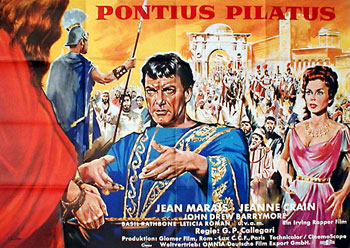In the course of my self-studies one statement by historian Will Durant (Caesar and Christ) stands out. “More Christians were killed by other Christians than by the Romans.” He was referring to the systematic purge of ‘heretics’ who did not accept the divinity of Jesus or concepts like Transubstantiation and the Trinity. These purges occurred after the Roman persecutions (AD 314). They were carried out by Christian popes, bishops, and councils. Alternative gospels were burned and the approved ones standardized. Welcome to Religion 101!

So, the story of Easter that we celebrate today may not be historically accurate but rather one of faith. Nevertheless, we know that Jesus existed. Roman historian Publius Cornelius Tacitus (AD 56 – 120?) in his Annals used the word Chrestiani for Christians and the man Christus as the origin of that name. He refers to the execution of Christus by Pontius Pilate.
There is also the Jewish historian Flavius Josephus (AD 37 – 100) who in his Antiquities, Book 18, writes of the imprisonment and death of John the Baptist and that ‘Joshua’ (Jesus) was the Messiah and a wise teacher who was crucified by Pontius Pilate.
Try to imagine what it was like to be a Roman legionary from Italy stationed in such a religious madhouse as Judea (and it still is!). Both Josephus and the New Testament give us insights into what these soldiers experienced. There was a resentment toward Jews for their obsessive dietary habits – where to get good Italian pork sausage in Judea? – and their aversion to Roman images of the emperor, the eagle, or the she-wolf, and their intolerance of Greco-Roman gods.

Josephus relates how seemingly every month a new Jewish prophet would arrive in Jerusalem and stir up disorder which the Romans had to quell, often violently. At times, Roman soldiers flipped the crowds a bare ass or genitalia from the parapets of Fortress Antonia (Roman headquarters in Jerusalem) to mock the fanatics. Usually, the Romans were a buffer between mainstream Jews and Jesus. In many cases, the Roman soldiery favored the upstarts. The Roman centurion (‘captain’) Cornelius converted and built them a ‘temple.’ He famously told Jesus, “Say but the word and my servant shall be healed.”
By the time Jesus was delivered over to Pilate the indictment by the Jewish authorities was changed from blasphemy (a religious crime that Pilate didn’t care a wit about) to sedition (very much a Roman concern). Hence the sign the Romans mockingly posted on his cross: INRI (Iesus Nazarenus Rex Iudaeorum) ‘Jesus of Nazareth, King of the Jews.’
It was a centurion who was sent by Pontius Pilate to verify Jesus’s death by spearing his side. Normally, it took days for a victim to die on the cross unless the Romans “mercifully” broke his legs to hasten death. Jesus had been suffering for only six hours when Joseph of Arimathea requested the body. Pilate couldn’t believe that Jesus was dead already and his legs intact, so he sent the centurion to the cross to verify death (Mark 15:44). It was by this centurion’s report that the body was released. Was the centurion a Christian sympathizer?
In his movie Passion of the Christ, Mel Gibson confronts the suspicion that Jesus survived the cross. In a gory cinema recreation, Jesus is subjected to scourging by Roman soldiers prior to crucifixion that few men could survive. By the time Jesus was sent to Golgotha he was a bloody mess and his head pierced with a crown of thorns. In short, he was a dead man walking.
For those who still doubt, the ultimate witnesses were the apostles and family of Jesus. These men and women not only confirmed his death on the cross and resurrection but willingly gave their lives to spread the word. It’s a matter of faith. -JLM




what part did PILATE PLAY IN JESUS’S DEATH? DOESN’T THE BIBLE STATE THAT PILATE DID NOT THINK THAT JESUS DESERVED THE DEATH PENALTY, WASHED HIS HANDS OF THIS EVENT AND TURNED THE SENTENCING TO THE PEOPLE?
ALSO, (AND I’M NOT SURE ABOUT THIS) WAS IT TRUE THAT FOR ROMAN REPRESENTATIVES, THEY WERE NOT TO GO AGAINST THE PEOPLE’S DEMANDS?
Historians believe that the four Gospels were written to make the Romans look mostly innocent because they were still written during the Roman era – why bad-mouth the current authority? I would highly doubt that a Roman perfect would ‘delegate” judgement to a mob rather than deliver the verdict as the Roman authority. Of all the evident that has come down to us the most damning thing is Jesus being accused of making himself “King of the Jews”- not the “messiah” but the political King – something the Romans reserved for themselves. That’s why INRI is the most important clue to his execution.